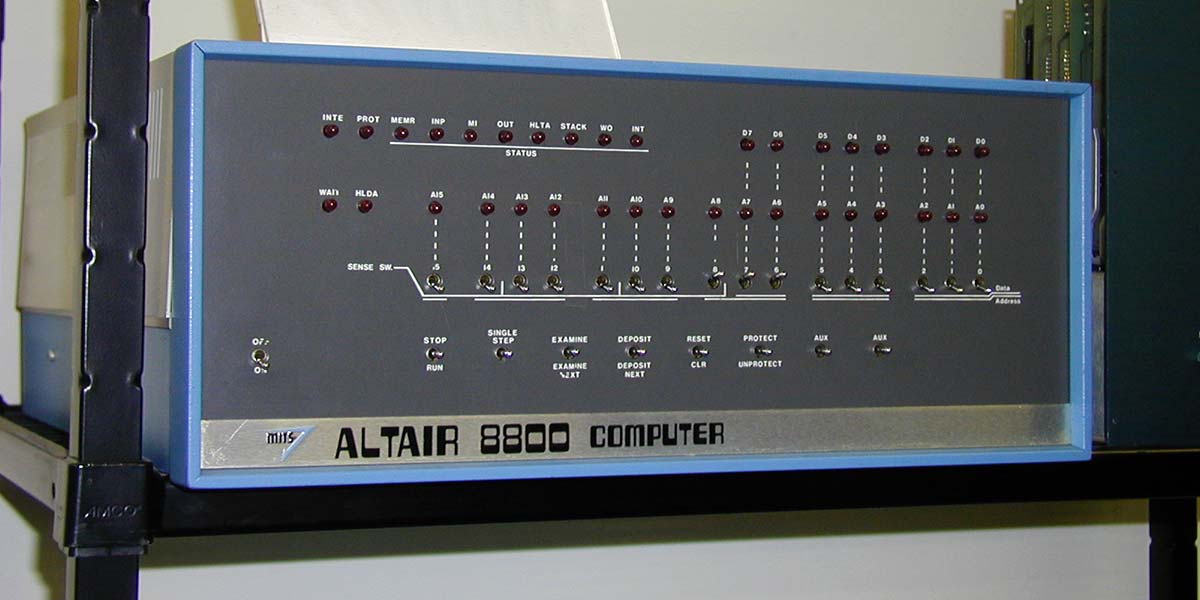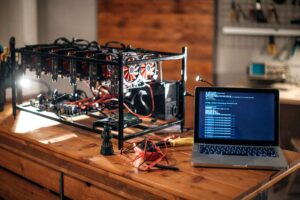The Dawn of the Personal Computer: A Revolution in Every Home
The idea of a computer in every home, once a distant dream, became a reality thanks to a series of groundbreaking innovations and visionary individuals. While the concept of computing machines dates back centuries, the “personal computer” as we know it today – a compact, affordable device for individual use – has a much more recent and equally fascinating origin story. The journey to the first personal computer invention was not a single, instantaneous event but rather a culmination of innovation, experimentation, and a relentless pursuit of making complex technology accessible.
Beyond Room-Sized Machines: The Quest for Personal Computing
For decades, computers were massive, expensive machines, typically housed in climate-controlled rooms and operated by teams of specialists. These mainframes, while powerful, were far removed from the everyday user. The dream of a computer that an individual could own and operate, however, began to take shape in the mid-20th century. Pioneers like Vannevar Bush with his “Memex” concept in the 1940s, and Douglas Engelbart with his groundbreaking work on interactive computing in the 1960s, laid theoretical and practical foundations for a more personal relationship with technology.
The Spark: Microprocessors and the Altair 8800 – A True First Personal Computer Invention
A pivotal moment arrived with the development of the microprocessor in the early 1970s. Intel’s 4004 in 1971 and later the 8080 in 1974 provided the compact, powerful “brains” necessary for smaller, more affordable computing devices.
It was this very Intel 8080 chip that powered what many consider to be the first personal computer invention: the Altair 8800. Released in January 1975 by Micro Instrumentation and Telemetry Systems (MITS), the Altair was initially sold as a kit for hobbyists. It lacked a keyboard, monitor, or even much memory – input was via switches and output through blinking lights. Yet, its affordability (around $400 for the basic kit) and the sheer novelty of owning a computer sparked an undeniable excitement. The Altair 8800 became a phenomenon, demonstrating a massive untapped market for personal computing. Its success even inspired Bill Gates and Paul Allen to develop a BASIC interpreter for it, leading to the formation of Microsoft.
The Rise of User-Friendly Machines: Apple, Commodore, and Tandy
While the Altair 8800 ignited the flame, it was still largely a machine for enthusiasts. The late 1970s saw the emergence of machines that were far more user-friendly, pushing personal computing further into the mainstream.
- Apple I and Apple II (1976-1977): Steve Wozniak and Steve Jobs’ Apple Computer Company quickly made its mark. The Apple II, in particular, was a runaway success, offering color graphics, expansion slots, and a simpler user experience. It became a staple in homes and schools.
- Commodore PET (1977): Launched around the same time as the Apple II, the Commodore PET (Personal Electronic Transactor) was an all-in-one unit with a built-in monitor and cassette drive. Its aggressive pricing made it highly competitive.
- TRS-80 (1977): Radio Shack’s TRS-80, often dubbed the “Trash-80” affectionately by its users, also proved immensely popular. It too offered a complete system at a relatively affordable price point.
These machines, along with others, solidified the concept of the personal computer as a viable consumer product, moving it beyond the realm of hobbyists into homes and small businesses. Each contributed significantly to the evolving narrative of the first personal computer invention.
The IBM PC and the Standardization of an Industry
The entrance of computing giant IBM into the personal computer market in 1981 with the IBM Personal Computer (IBM PC) marked another turning point. While not the first, the IBM PC’s open architecture and the widespread adoption of its operating system (MS-DOS from Microsoft) led to a rapid proliferation of “IBM PC compatibles.” This standardization created a massive ecosystem of hardware and software developers, solidifying the personal computer’s role as an indispensable tool. The influence of this machine cannot be understated when discussing the impact of the first personal computer invention.
A Legacy of Innovation
From the blinking lights of the Altair 8800 to the sleek, powerful devices we use today, the journey of the personal computer is a testament to human ingenuity. The first personal computer invention wasn’t a singular event but a continuous evolution, driven by a desire to make the power of computing accessible to everyone. These early machines, often crude by today’s standards, laid the essential groundwork for the digital world we now inhabit, fundamentally transforming how we work, learn, communicate, and entertain ourselves. The revolution sparked by the first personal computer continues to unfold, shaping our lives in ways its early pioneers could only have dreamed.














Post Comment